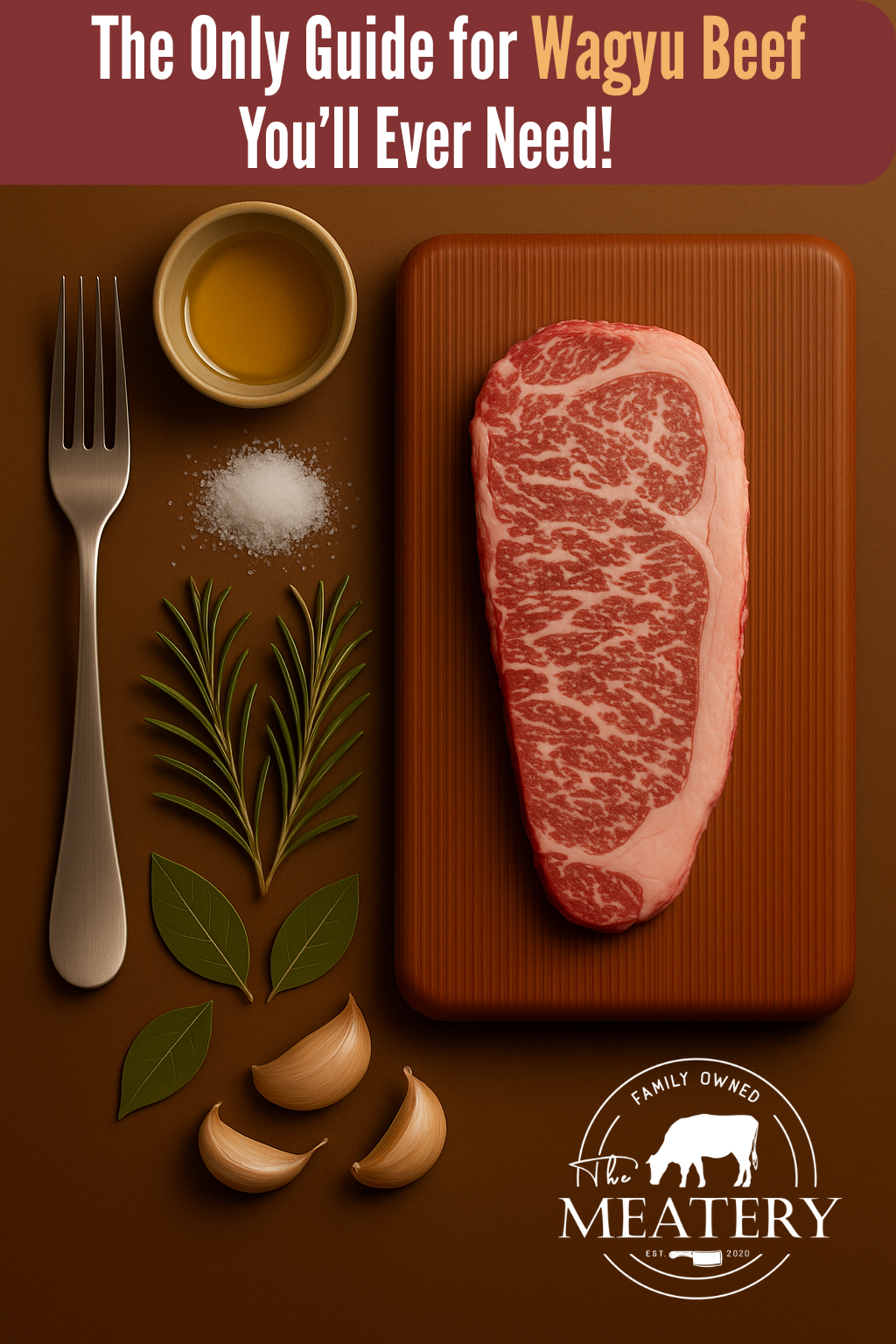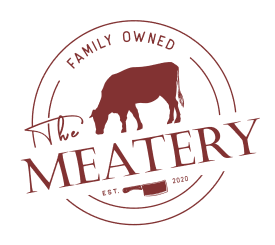What is Wagyu Beef?
Wagyu beef represents the pinnacle of luxury meat, distinguished by its extraordinary marbling, buttery texture, and complex flavor profile. The term "Wagyu" literally translates to "Japanese cow" (wa = Japanese, gyu = cow), referring to specific cattle breeds native to Japan that have been selectively bred for centuries to produce this exceptional meat.
What sets Wagyu beef and steaks apart is its genetic predisposition to develop intramuscular fat cells—tiny flecks of fat distributed throughout the muscle tissue—creating its signature marbling. This fat has a lower melting point (around 77°F/25°C compared to 95°F/35°C in regular beef), allowing it to literally melt as you eat, creating a uniquely luxurious experience.
The History of Wagyu Cattle in Japan
Wagyu cattle have been integral to Japan's heritage for over 2,000 years, initially introduced as draft animals from China and Korea. During the Meiji Era (1868-1912), Japan transitioned from agricultural work-focused cattle breeding to beef production, largely influenced by increased openness to Western culinary practices.
Each Japanese region developed distinct bloodlines tailored to local tastes and environmental conditions. The meticulous record-keeping and care farmers dedicated to these cattle symbolized deep cultural reverence, underscoring Wagyu’s significance beyond mere agriculture.
How Wagyu Spread Globally
The global popularity of Wagyu beef began relatively recently. Japan strictly controlled Wagyu cattle exports until the 1970s, considering them a national treasure. Limited export windows in the late 20th century allowed select cattle to leave Japan, primarily to the United States and Australia.
Today, Australia and the United States lead global Wagyu production outside Japan. Australian Wagyu is renowned for its close adherence to Japanese breeding standards, while American Wagyu often incorporates crossbreeding with Angus cattle, creating a distinct flavor profile.
Types of Wagyu Beef: A Buyer's Guide
"Wagyu" encompasses multiple breeds and regional varieties, each with distinct flavors and textures. The Japanese Black breed dominates premium Wagyu production, renowned for exceptional marbling capabilities.
The Most Popular Regional Varieties of Japanese Wagyu Beef
-
Kobe Beef: Exclusive to Hyogo Prefecture; highly regulated and globally recognized for exceptional quality.
-
Kagoshima: From Kagoshima Prefecture, famous for its intensive care and rich marbling.
- Miyazaki Beef: Multiple time award-winner, known for consistent quality.
American and Australian Wagyu
American Wagyu typically involves crossbreeding with Angus cattle, creating beef with slightly reduced marbling but increased cut sizes. Australian Wagyu tends to maintain higher percentages of purebred Wagyu genetics, providing a marbling level closer to Japanese standards.
What is the Best Bang for Your Buck?
Premium Japanese A5 Wagyu can command prices of $150-$200 per pound, while American and Australian Wagyu ranges typically from $40-$100 per pound, reflecting differences in genetics, breeding standards, and marbling.
While we believe EVERYONE should try Japanese Wagyu in their lifetime, we also understand it comes at a premium price point. Australian Wagyu is always a great option (and my personal favorite!), with incredible flavor and tenderness while not breaking the bank. Something like an Australian Wagyu Picanha Steak can easily elevate any dinner, and will have your guests asking "Where did you get that?!" all night.
If you'd like to be the talk of the next barbeque, The Meatery also offers countless cuts that are amazing for group occasions. Our Australian Wagyu Burgers will have your friends questioning why you ever get fast food burgers. Not burger fans? We also carry Snake River Farm's American Wagyu Hot Dogs! (For those up to the challenge and local to San Diego, call our store and ask about our Australian Wagyu Brisket!)
Understanding How Wagyu Beef is Graded
The unique quality of Wagyu beef demands a precise grading system, and the most infamous of such is Japan’s Beef Marbling Standard (BMS). BMS ranks marbling on a scale from 1 to 12, with higher numbers indicating superior marbling quality. An A5 rating represents the peak, requiring a minimum BMS of 8, achieved by only the top 15% of Japanese Wagyu.
The Japanese system evaluates five crucial elements:
-
Yield grade (A, B, or C)
-
Marbling (BMS scale)
-
Meat color and brightness
-
Fat color and quality
-
Firmness and texture
Marbling, or intramuscular fat, significantly impacts Wagyu's tenderness, juiciness, and rich flavor. As fat melts during cooking, it permeates meat fibers, enhancing taste and texture.
Wagyu marbling is visually distinctive, presenting as fine, evenly distributed flecks—ideal marbling patterns resemble delicate snowflakes. High BMS scores (8-12) deliver profound culinary experiences, though extremely rich marbling (11-12) may be overly intense for some palates, emphasizing the appeal of balanced marbling (BMS 8-10).
Japanese vs. American Grading Systems
Japan and America’s beef grading systems differ fundamentally. The Japanese grading system evaluates multiple attributes, whereas the USDA beef grading system primarily assesses marbling and maturity. Japanese A5-grade Wagyu, requiring minimum BMS scores far above the USDA's highest Prime grade, sets an unmatched benchmark.
Japanese Wagyu certification includes detailed tracking information, ensuring transparency and authenticity—a stark contrast to American standards, which lack equivalent precision (due to a bigger scaled production process)
Cooking and Enjoying Wagyu Beef
When preparing Wagyu, especially Japanese A5, simplicity reigns supreme. A quick, hot pan-sear preserves its delicate texture and marbling, while bringing out highlights of the Umami Flavor. American and Australian Wagyu, which is more resilient and leaner, can be grilled or roasted, retaining lots moisture and flavor despite longer cooking.
When cooking any Wagyu, make sure that you use a high smoke point cooking oil. This will ensure that you get a beautiful sear and crust on the outside, something that every steak lover appreciates. Alternatively you can use Wagyu Beef Tallow in your pan the same way you would use butter, giving your Wagyu Steak a deeper, beefer flavor profile (while not available online, The Meatery carries Wagyu Beef Tallow in-store!)
Health Benefits of Wagyu Beef
Despite its rich marbling, the fat in Wagyu beef has a different molecular structure, giving it notable health advantages. Its fat is higher in monounsaturated fatty acids (MUFAs), associated with cardiovascular benefits, including lower cholesterol levels and heart health. Additionally, Wagyu beef contains essential nutrients like omega-3 and omega-6 fatty acids, vitamin B12, iron, and zinc.
Ethical Considerations in Wagyu Production
Wagyu farming is often more humane compared to conventional beef production due to traditional small-scale methods emphasizing animal welfare. However, consumers should seek producers transparent about animal husbandry practices to support ethically produced Wagyu beef.
Where to Buy Authentic Wagyu Beef
Purchasing authentic Wagyu involves careful selection of trusted suppliers. Reputable sellers like The Meatery offer detailed certifications, including breed specifics, marbling scores, and provenance, ensuring customers receive genuine Wagyu beef.
When shopping, always request documentation verifying the authenticity and quality of the Wagyu beef to guarantee an exceptional culinary experience.









